Disclosure: This article contains affiliate links. We may earn a commission from purchases at no extra cost to you, which helps our travel content.
The early morning light filters through the colonial architecture as I make my way through Santiago's awakening streets. Having spent the better part of two decades documenting material culture across the Andean region, I find Chile's capital offers a fascinating microcosm of the country's diverse cultural expressions through its marketplaces. Santiago presents a compelling juxtaposition—pre-Columbian textile traditions exist alongside contemporary Chilean design, creating a shopping landscape that reflects both the preservation of indigenous craftsmanship and the evolution of modern Chilean identity. As an anthropologist who has dedicated her career to understanding the stories behind handcrafted goods, I've found Santiago's markets and boutiques to be not merely commercial spaces but living archives of Chile's material heritage. Whether you're traveling with family, friends, or colleagues, this weekend guide will help you navigate Santiago's shopping scene with an appreciation for the cultural significance behind each potential purchase.
Centro Artesanal Santa Lucia: The Heart of Chilean Craftsmanship
Nestled at the base of Cerro Santa Lucía, this artisan market has been my first stop on every visit to Santiago since my initial fieldwork here in 2003. The market's labyrinthine passages house over 60 small workshops where artisans practice techniques that have been passed down through generations.
On my most recent visit, I spent a morning with Doña Elena, a weaver from the Mapuche indigenous community whose family has been creating textiles for seven generations. Her fingers moved with practiced precision across her loom as she explained how the geometric patterns in her work represent the cosmological beliefs of her ancestors. These textiles—table runners, ponchos, and wall hangings—incorporate natural dyes derived from native plants, creating earthy reds, blues, and yellows that have cultural significance beyond their aesthetic appeal.
The market also showcases exceptional copper work (Chile being the world's largest copper producer), leather goods, and lapis lazuli jewelry. This semi-precious blue stone is found almost exclusively in Chile and Afghanistan, making it a signature Chilean souvenir with deep cultural resonance. I've documented how the mining and crafting of lapis lazuli represents a continuous tradition dating back to pre-Columbian civilizations.
When photographing the artisans at work, I always use my travel camera which allows me to capture the intricate details of their craftsmanship without being intrusive. The market's dim lighting and tight quarters make this compact but powerful camera ideal for documenting these cultural moments.
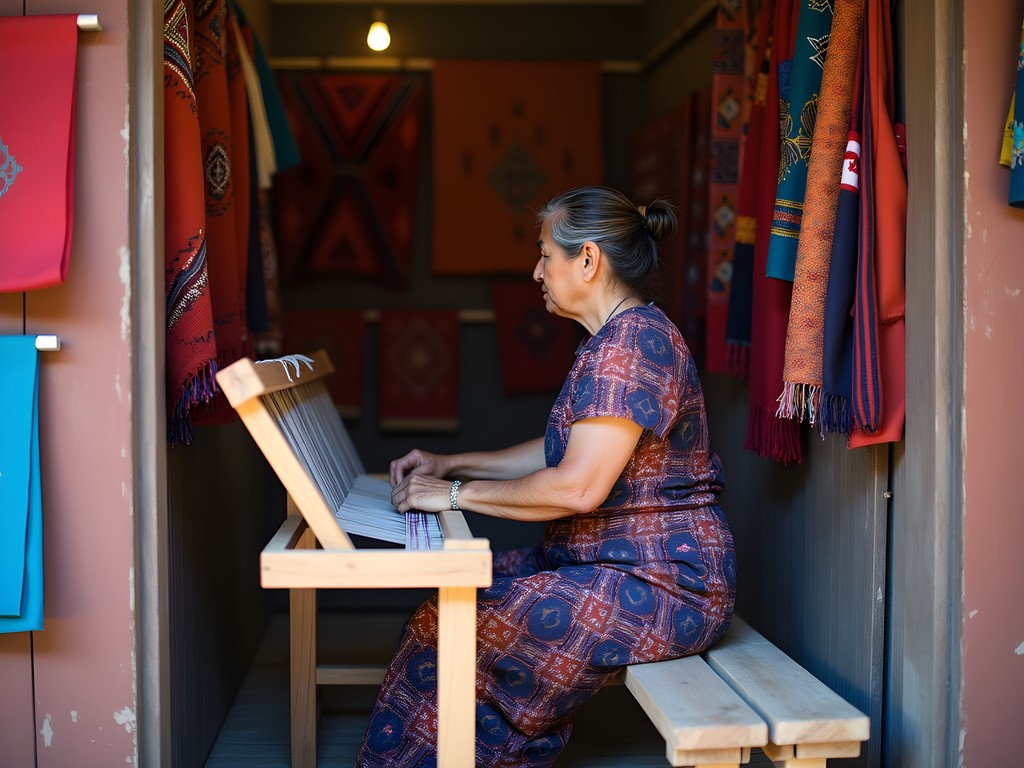
💡 Pro Tips
- Visit early on weekday mornings to have meaningful conversations with artisans before the tourist crowds arrive
- Look for certification tags that identify authentic indigenous-made crafts versus mass-produced imitations
- Bring cash as many smaller vendors don't accept credit cards
Pueblito Los Dominicos: An Artisan Village Experience
Set in a former colonial convent in Las Condes, Pueblito Los Dominicos represents one of the most comprehensive collections of Chilean craftsmanship I've encountered in my research. Unlike the more tourist-oriented markets downtown, Los Dominicos functions as a living workshop community where over 140 artisans not only sell their creations but actively produce them on-site.
During my fieldwork last autumn, I spent several days documenting the diverse techniques represented here—from horsehair weaving (crin) from the central valley to totora reed crafts from the northern regions. What makes Los Dominicos particularly valuable from an anthropological perspective is the preservation of regional techniques that might otherwise disappear in our increasingly homogenized global marketplace.
I was particularly moved by the workshop of Sergio Arias, a third-generation silversmith whose filigree work incorporates traditional Mapuche and colonial Spanish motifs. As he demonstrated the painstaking process of creating a pair of earrings, he explained how each design element carries symbolic meaning related to fertility, protection, or spiritual connection. This transmission of cultural knowledge through material objects exemplifies why thoughtful shopping can be a form of heritage preservation.
The village-like setting, complete with cobblestone paths and colonial architecture, creates an immersive cultural experience rather than a mere shopping excursion. Many workshops include small museums displaying historical tools and techniques, making Los Dominicos as educational as it is commercial.
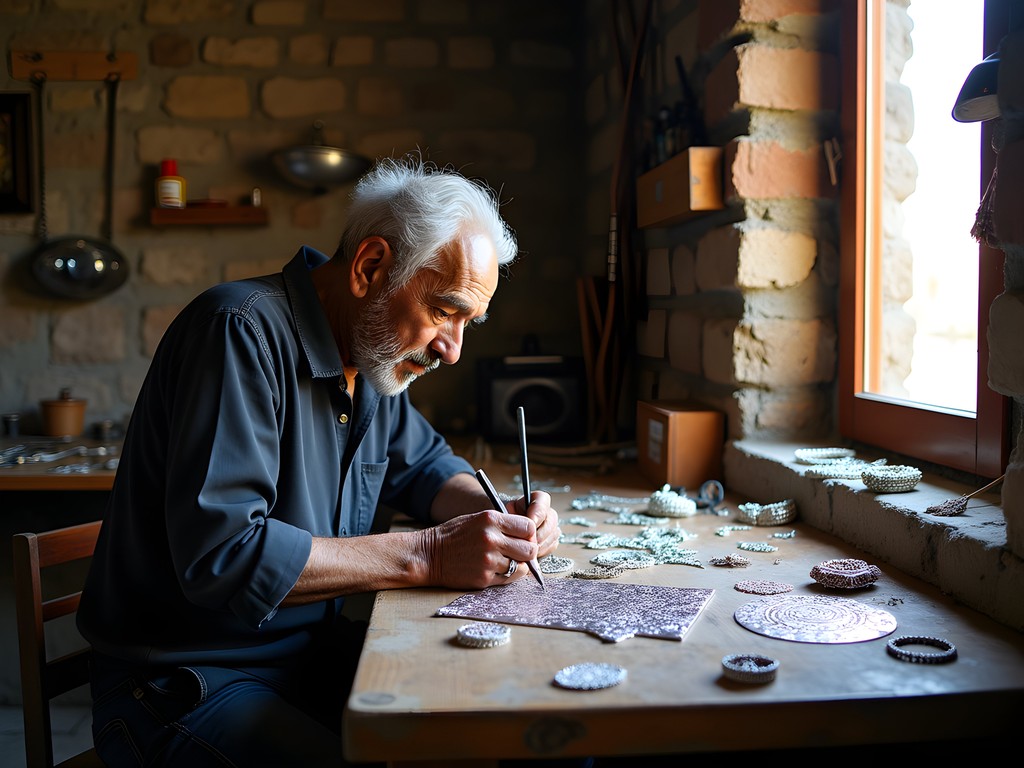
💡 Pro Tips
- Allow at least 3-4 hours to properly explore the village and engage with artisans
- Visit the on-site restaurants serving traditional Chilean cuisine for a complete cultural experience
- Many artisans accept custom orders if you're staying in Santiago for several days
La Chascona Gift Shop: Where Literature Meets Material Culture
While not traditionally included in shopping guides, the gift shop at La Chascona—one of Pablo Neruda's three homes in Chile—represents what I consider thoughtful cultural commerce. Located in the bohemian Bellavista neighborhood, this museum-shop offers items that connect visitors to Chile's literary heritage and Neruda's profound influence on Chilean cultural identity.
As someone who studies the intersection of material culture and collective memory, I find the carefully curated merchandise here reflects a deeper understanding of how objects can embody cultural narratives. Beyond the expected books of poetry (in multiple translations), the shop offers reproductions of Neruda's personal items, art inspired by his work, and crafts that reflect his passion for collecting maritime artifacts.
On my last visit, I purchased a beautiful leather journal embossed with lines from Neruda's Ode to Things—a poem that resonates deeply with my work on material culture. The journal has become my primary field notebook for documenting artisan interviews throughout the Andean region.
The shop also features work by contemporary Chilean artists and designers whose creations engage with literary themes, demonstrating how Neruda's legacy continues to inspire material production in Chile. This relationship between literature and craft represents a uniquely Chilean cultural synthesis worth supporting through thoughtful purchases.
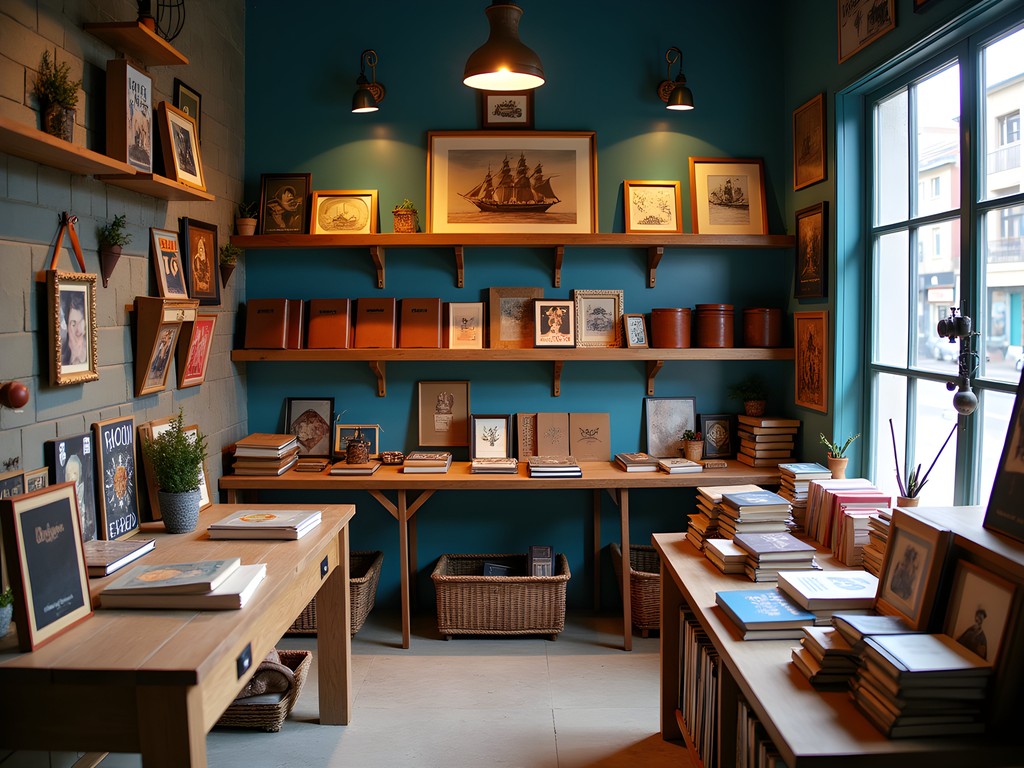
💡 Pro Tips
- Visit the house museum first to understand the context behind the items in the gift shop
- Look for items that incorporate Neruda's lesser-known visual art alongside his poetry
- The shop offers some of the best-quality books about Chilean culture and history in English
Alonso de Córdova: Contemporary Chilean Design
While my anthropological research typically focuses on traditional crafts, I'm equally interested in how contemporary designers reinterpret cultural heritage through modern expressions. The upscale Alonso de Córdova street in Vitacura showcases Chile's evolving design identity through a collection of high-end boutiques and galleries.
What fascinates me about this district is how Chilean designers are creating a distinctive aesthetic that draws from indigenous influences while engaging with global design conversations. At Ona, a boutique representing over 20 Chilean designers, I observed how traditional Mapuche textile patterns have been reinterpreted in contemporary clothing silhouettes. The designer, Francisca Bravo, explained to me how she collaborates directly with Mapuche weavers, creating an economic partnership that supports traditional knowledge while allowing it to evolve.
Similarly, the jewelry at Walka Studio demonstrates how pre-Columbian metallurgic techniques can be applied to create strikingly modern pieces. Their silver and copper work honors ancestral craftsmanship while creating pieces that speak to contemporary sensibilities.
While exploring this district, I rely on my crossbody bag which provides security in the upscale shopping district while allowing me to keep my field notebook, camera, and purchases easily accessible. The multiple compartments help me organize receipts and business cards I collect from designers for my research.
For those interested in understanding how Chilean design is positioning itself globally, this district offers insights into how tradition and innovation are being balanced in the country's creative economy.
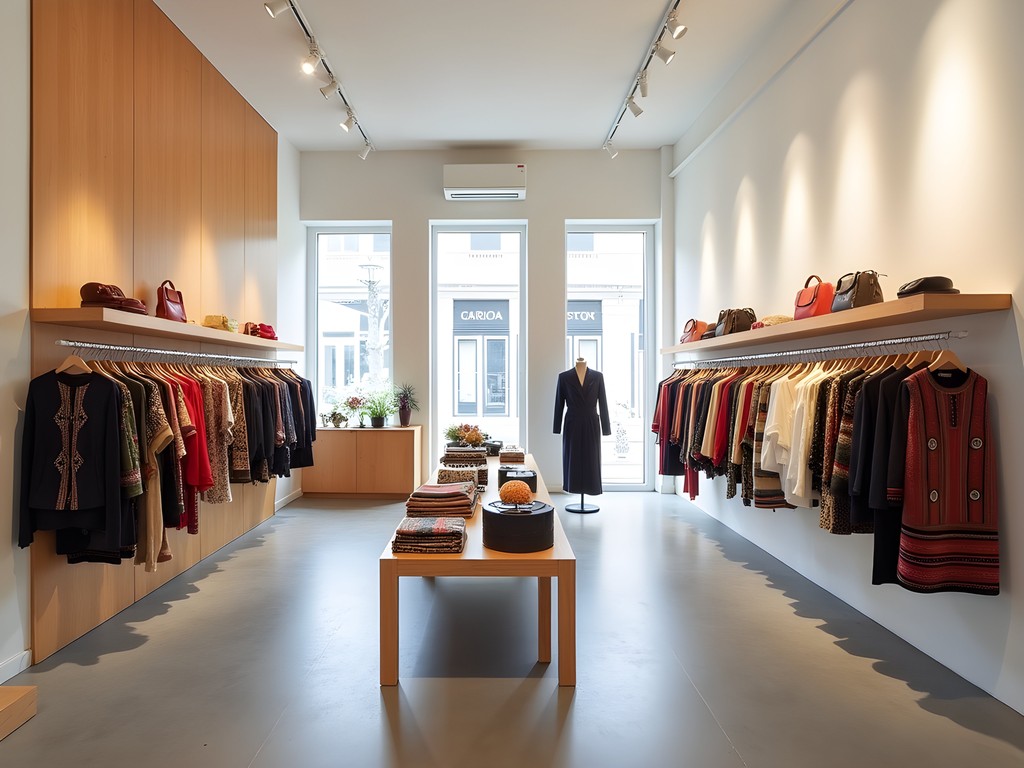
💡 Pro Tips
- Many boutiques represent the work of multiple designers, so ask about the creators behind specific pieces
- Look for shops that explicitly mention collaborations with indigenous artisans for more culturally significant pieces
- Some designers offer studio visits by appointment if you're interested in the production process
Mercado Central: Beyond the Tourist Experience
No exploration of Santiago's material culture would be complete without visiting the iconic Mercado Central. While primarily known as a seafood market, this 19th-century structure houses a fascinating ecosystem of vendors selling everything from traditional Chilean foodstuffs to practical items used in daily Chilean life.
As an anthropologist, I'm drawn to markets not just for what they sell but for what they reveal about local cultural practices. During my research visits, I bypass the tourist-oriented restaurants in the center and head to the market's periphery, where Santiaguinos shop for household goods that reflect contemporary Chilean domestic life.
The cookware section provides particular insight into Chilean culinary traditions. Clay pots for preparing pastel de choclo (corn pie) and paila dishes speak to the persistence of traditional cooking methods despite modernization. I've documented how these specialized vessels maintain their cultural relevance even as Chilean kitchens adopt global appliances.
For visitors interested in Chilean gastronomy, the market offers a wealth of specialty ingredients that make unique souvenirs—merkén (smoked chili seasoning), dulce de membrillo (quince paste), and murtado (myrtle berry jam) all travel well and provide a taste of Chile long after your visit.
When navigating the sometimes chaotic market environment, I find my packing cubes invaluable for organizing smaller purchases within my day bag. These lightweight organizers keep fragile items protected and help separate food items from crafts or textiles I've purchased elsewhere in the city.
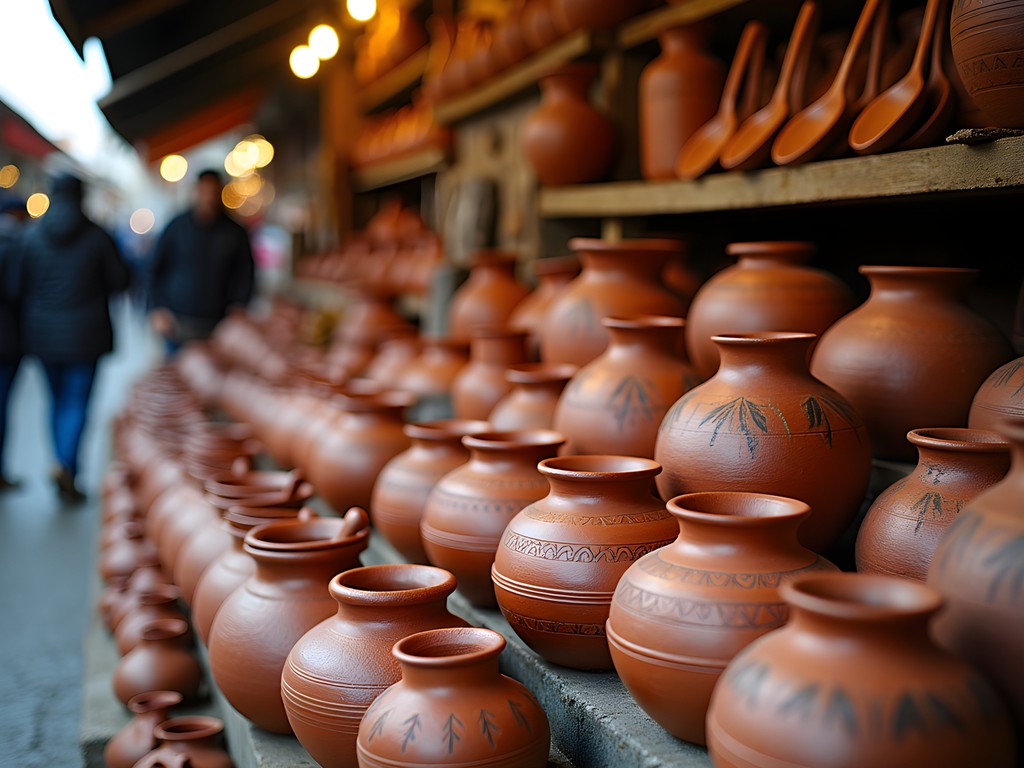
💡 Pro Tips
- Visit between 8-10am to see the market at its authentic best, when local chefs and home cooks do their shopping
- Look for vendors selling traditional Chilean kitchen tools like wooden spoons and colanders made from hollowed gourds
- The best food stalls are those frequented by local workers, usually along the market's edges rather than in the central tourist area
Final Thoughts
As I pack my purchases—each wrapped in tissue paper and tucked carefully into my suitcase—I reflect on how Santiago's diverse shopping landscape offers a material window into Chilean identity. From indigenous crafts that maintain centuries-old traditions to contemporary designs that reimagine cultural heritage for global markets, these objects tell the story of a nation navigating between preservation and innovation. When approaching shopping as cultural exploration rather than mere consumption, each purchase becomes both a personal souvenir and a small act of support for the hands that create. Whether you're drawn to traditional crafts, literary connections, or contemporary design, Santiago invites you to shop thoughtfully—to ask questions about provenance, to learn techniques, and to understand the cultural significance behind each potential purchase. In doing so, you'll return home not just with unique items but with a deeper appreciation for the complex cultural tapestry that is modern Chile.
✨ Key Takeaways
- Shop early in the day at artisan markets to engage meaningfully with craftspeople before tourist crowds arrive
- Look for items that demonstrate cultural fusion—traditional techniques applied to contemporary designs often represent the most dynamic aspects of Chilean creativity
- Support establishments that provide context and education about the cultural significance of their merchandise
- Consider purchases not just as souvenirs but as material connections to Chilean cultural heritage
📋 Practical Information
Best Time to Visit
year-round, though September-November (spring) offers pleasant weather and fewer crowds
Budget Estimate
$50-200 USD per day for shopping, depending on interest in higher-end items
Recommended Duration
2-3 days to explore markets and boutiques without rushing
Difficulty Level
Beginner
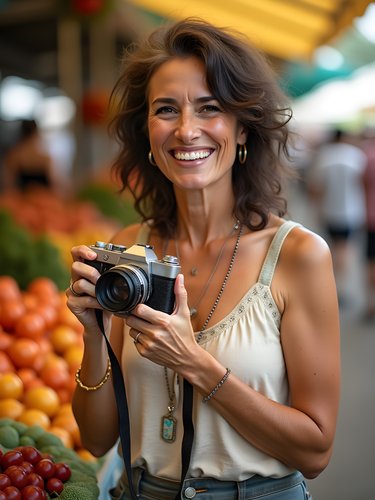
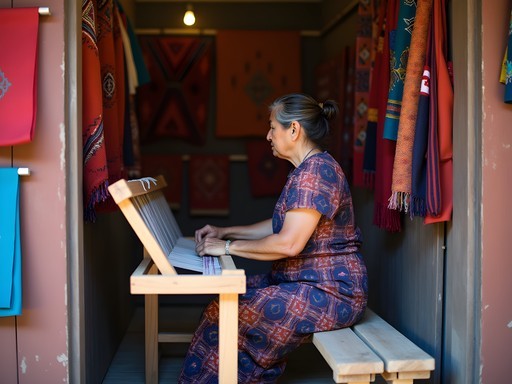
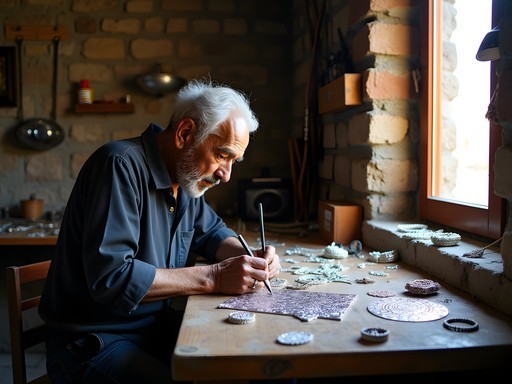
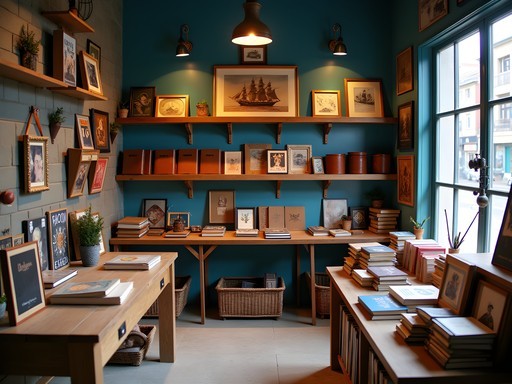
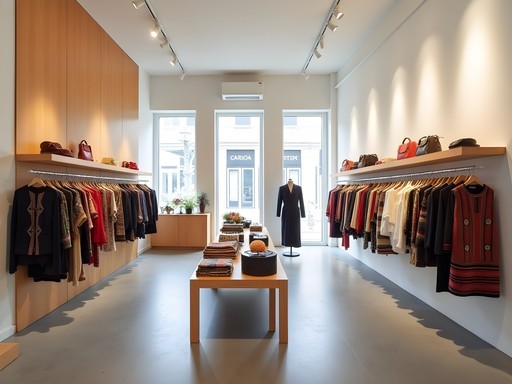
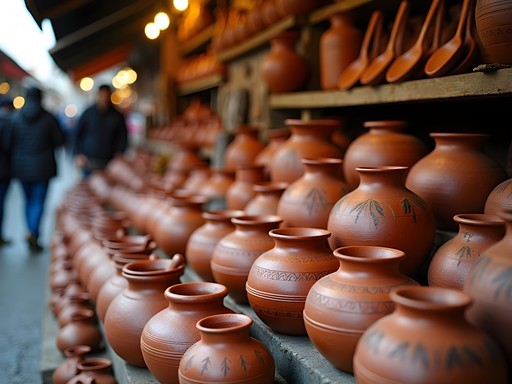


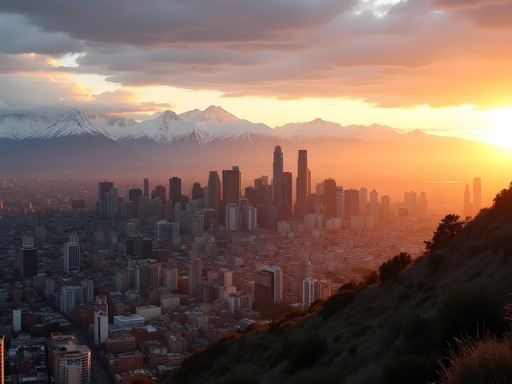

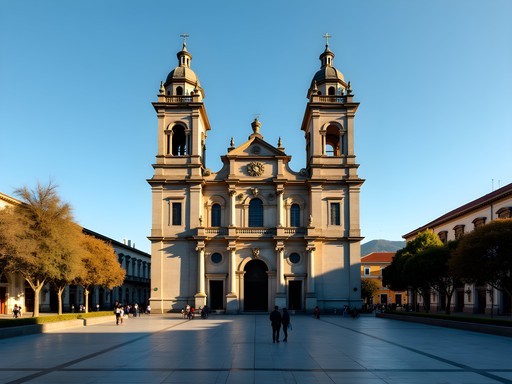

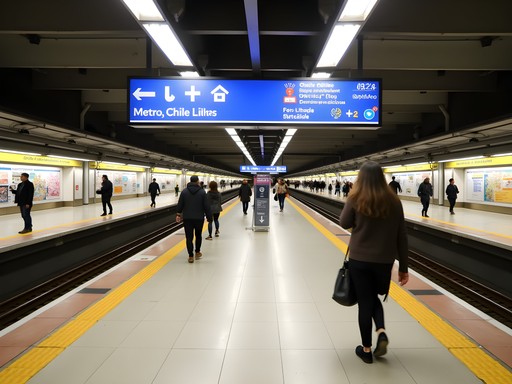
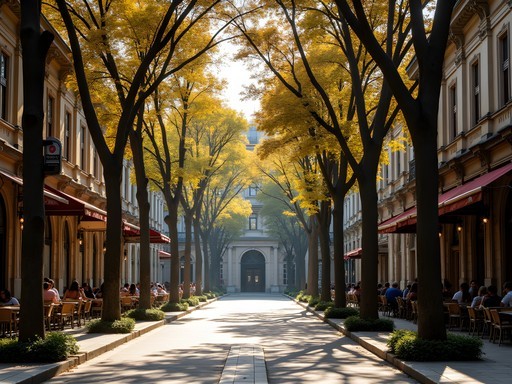
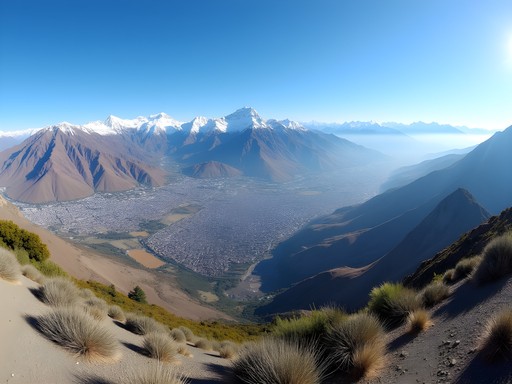

Comments
coffeebackpacker
Just got back from Santiago and I'm kicking myself for missing La Chascona Gift Shop! I'm a huge Neruda fan and somehow it wasn't on my radar. Your blog is making me want to book another trip ASAP! I did spend way too much money at Centro Artesanal though - those lapis lazuli pieces are impossible to resist. My favorite purchase was a small alpaca wool wall hanging that now has pride of place in my living room. Anyone else come home with treasures they're obsessed with?
blueclimber
That shot of the sunrise over the market is STUNNING! What camera do you use? The colors are incredible!
Samantha Hughes
Thank you! Just my trusty old iPhone 13 Pro with a bit of editing in Lightroom mobile. The morning light in Santiago does most of the work!
Sarah Powell
Fantastic post on Santiago's shopping scene! I'd add that serious shoppers should consider bringing an expandable duffel in their luggage. I filled my packable duffel with treasures from Los Dominicos and La Chascona. The book selection at Neruda's house shop is exceptional - I found bilingual editions of his poetry that make perfect gifts. Also worth noting that credit cards are widely accepted at the upscale shops, but smaller vendors at Santa Lucia prefer cash (and sometimes offer better prices for it).
starwalker
Great write-up! I'm heading to Santiago next month and definitely want to check out Alonso de Córdova. Is it walking distance from the main tourist areas or should I plan to take transportation? Also, are the boutiques there super expensive or are there some mid-range options too?
Sarah Powell
Not Samantha, but I was there in September. Definitely take an Uber or the metro to Alonso de Córdova - it's in the Las Condes area, quite a distance from the historic center. It's upscale but there are some more affordable shops mixed in with the luxury brands. The coffee shops there are lovely too!
starwalker
Thanks Sarah! Super helpful.
Frank Garcia
Just got back from Santiago last month and your post perfectly captures the shopping experience. Pueblito Los Dominicos was my favorite - spent an entire afternoon watching artisans work. The pricing structure is interesting there - I noticed items were about 20-30% more expensive than at Santa Lucia, but the quality seemed higher and the atmosphere was worth it. One tip for budget travelers: many vendors will negotiate if you're buying multiple items. Anyone else notice this?
starwalker
Absolutely! I got a great deal on three alpaca scarves at Los Dominicos by bundling. The lady even threw in a small bracelet for free.
happyblogger
Beautiful photos! Can't wait to visit next year!
nomaddiver
Centro Artesanal Santa Lucia was the highlight of my Santiago trip last year! Found the most beautiful hand-painted ceramic pieces there that I somehow managed to get home without breaking. The prices were so reasonable compared to what you'd pay for similar quality back home. Did you check out any of the small cafes around the market? I stumbled upon one that served the most amazing empanadas.
Samantha Hughes
Yes! There's a little café on the corner with blue awnings that does incredible empanadas de pino. Glad you enjoyed Santa Lucia too!
nomaddiver
That's the one! Those empanadas still haunt my dreams haha
sunsetking
Just booked my flights to Santiago after reading this! Can't wait to check out La Chascona shop - big Neruda fan here!
tripvibes
You'll love it! Don't miss his house tour too - the architecture is as poetic as his writing!
tripfan
Great post! I'm planning to visit Santiago in December. Is that a good time for shopping? Are the markets extra crowded during holiday season? Also curious if credit cards are widely accepted or if I should bring cash for the artisan markets.
Jean Wells
December is excellent for shopping in Santiago, though expect larger crowds as locals do holiday shopping. The markets are festively decorated, which adds to the experience. Most established vendors at Los Dominicos accept cards, but Santa Lucia is primarily cash-based. I recommend carrying Chilean pesos for better prices and smoother transactions at smaller stalls.
wildqueen
Did you visit any of the malls in Santiago? I've heard they have some good deals on leather goods and wine?
Venture X
Premium card with 2X miles, $300 travel credit, Priority Pass